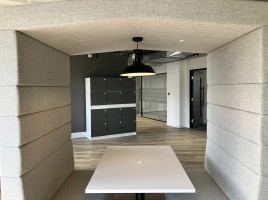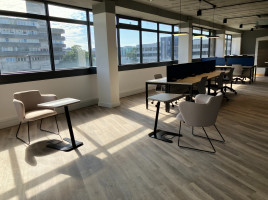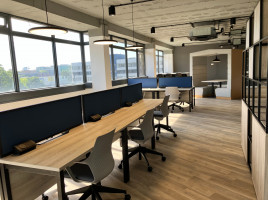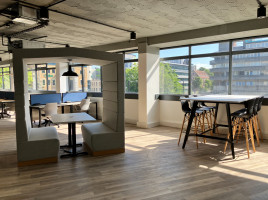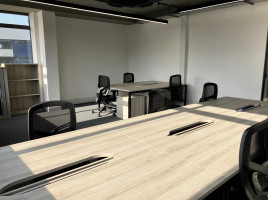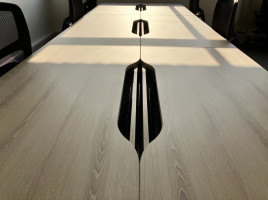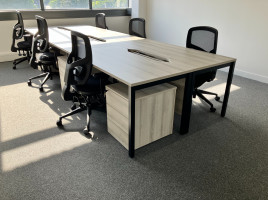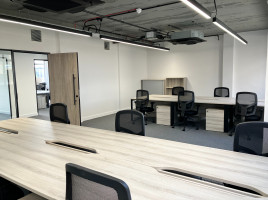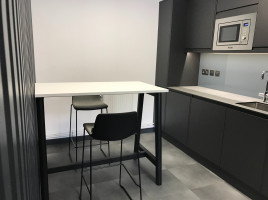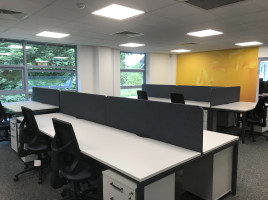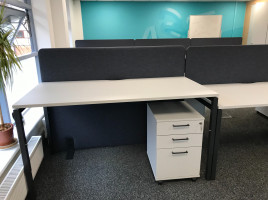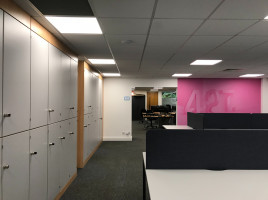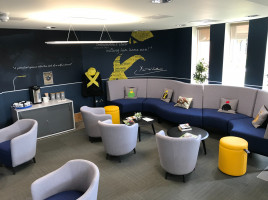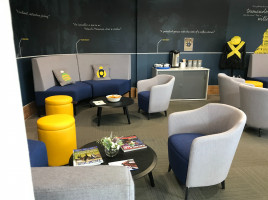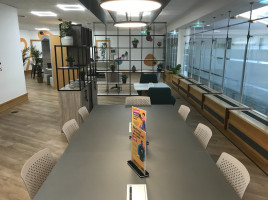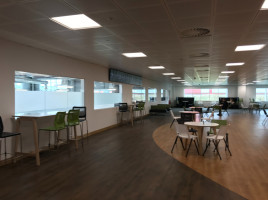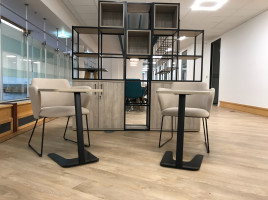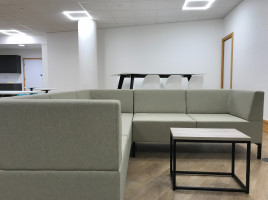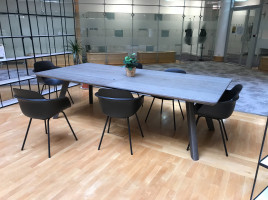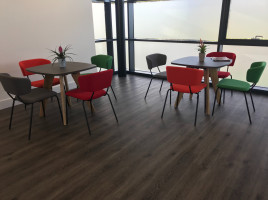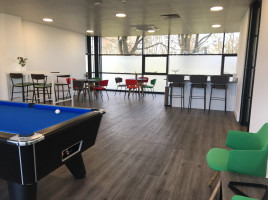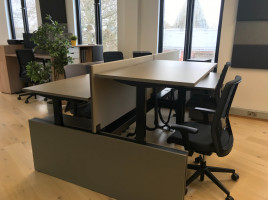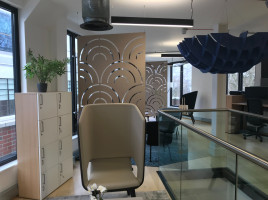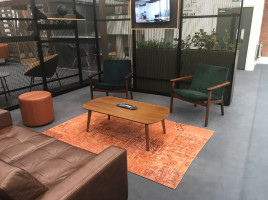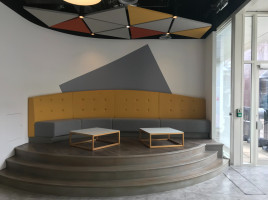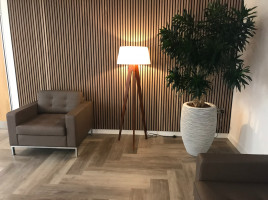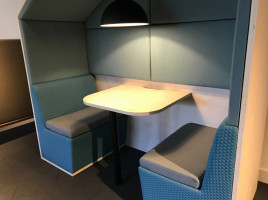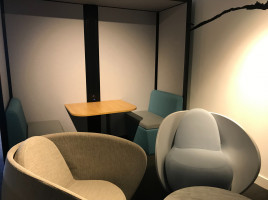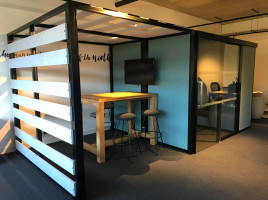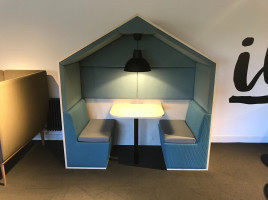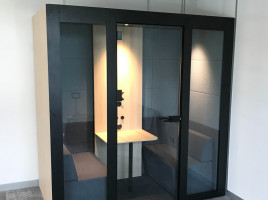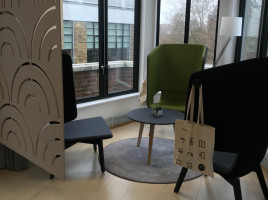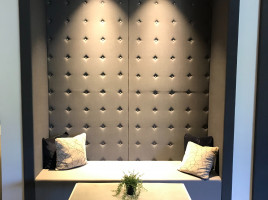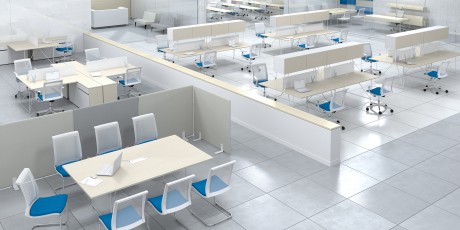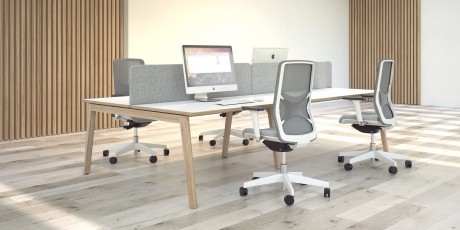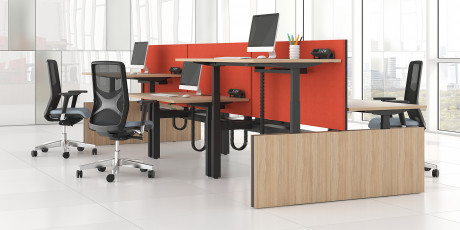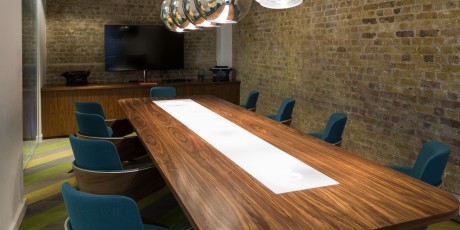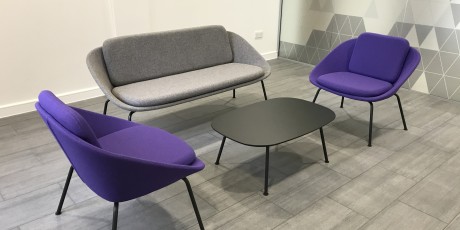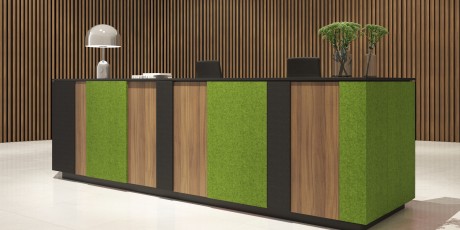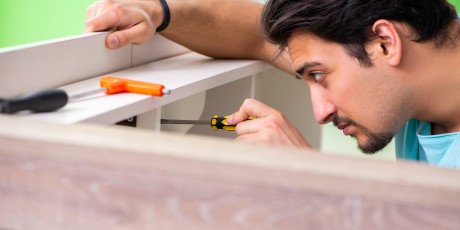I would highly recommend Alexander Green Interiors. They gave a very friendly and efficient service and the quality of the screens provided is very good. Having the screens fitted has allowed us to continue to work as a team in the office and has given us the confidence to do so.
1G Dynamics
Lee is the perfect supplier. He was honest, reliable and worked in a speedy manner. Lee is friendly and wasn't pushy; he gave us the best advice and waited for us to be ready to purchase. The desks were fitted in a clean and professional manner so there was little disruption to our office. I could not recommend Lee enough and I will certainly be using his services again in the future. Thank you for looking after us Lee!
Busy Bee Recruitment
Lee has provided office furniture to our business as well as to customers we have introduced him to. In all cases Lee has listened to what we and our customers have wanted and has gone that extra mile by suggesting alternatives and improvements to our customers’ requirements. Lee has always been prompt in attending to our customers’ requests and has always delivered on his proposals. I have recently visited our customers' offices and the attention to detail in Lee's furniture has been second to none. Their knowledge of the furniture industry is amazing and his attention to detail shines through on his projects. Lee and Alexander Green are our 'go to' office interiors business, and we are truly happy to recommend them whenever and wherever possible.
Cambridge Networks
Very quick and efficient service and the product was exactly what we wanted – thank you.
Cristea Roberts Gallery
From the first point of contact with Lee Alexander from Alexander Green Interiors in establishing our Covid protection screens for our Headquarter offices, nothing was too much trouble, discussing our existing office layout design, sending samples, and seeing the delivery through on a quick turnaround. I would like to thank Lee and the team and highly recommend them for any office furniture requirements and Covid protection screens for teams returning in the workplace.
Ideal Response
Over a testing period for our business, Alexander Green have proven a reliable and innovative supplier who can be trusted to offer the best in service and quality.
IM Products
If you are looking for an office furniture supplier who will take the trouble to ensure that a chair fits you, as well as your budget, please contact Lee Alexander. He truly offers a personal service. I recommended Lee Alexander to my neighbour, who was in severe back pain from working at the kitchen table with an unsuitable chair. I loaned him one of Lee Alexander's chairs, and he quickly ordered one for himself. I just love my new table. Thank you for arranging it to be made to measure so that we can have two people working at a Covid-safe distance in a relatively small space. The little beech trim to the white table that you suggested makes it look like much more expensive than it actually was.
Janeteva Estate Management
The specification, design and supply of furniture components was assisted in a professional manner, making the ordering process a good experience. I found the installation team very knowledgeable and friendly. The provision of an installation supervisor as a point of contact on the day expedited the works without the need for too much input from myself, leaving me free to pursue other aspects of the project.
The team were attentive during a brief Health & Safety induction and adhered to conditions set out on the Permit To Work. The installation went smoothly and the room was left in specified condition. I particularly liked the fact that I was asked if everything was satisfactory before the team left site, negating any need for snagging to be undertaken. I would definitely use Alexander Green again.
Johnson Matthey
We have done business with Alexander Green Interiors for a number of years and have always received a reliable and professional service from them. Their communications are excellent and customer satisfaction is one of their top priorities. They are our first port of call when we require office and bespoke furniture. Lee takes time to fully understand our requirements and goes out of his way to ensure that we are left satisfied with the end results. He has been especially helpful during the recent COVID-19 pandemic, and has worked with us to install screens to protect our staff and keep key areas of our business operational.
Johnson Matthey Royston
When we were looking to improve our office space we were referred to Alexander Green by a trusted supplier. From the moment we met with Lee we were very impressed, and what began as a project to supply some new office furniture has turned into a full redesign - with significant modifications due to Covid-19 compliance - and we are delighted with the outcome. Lee took a detailed brief and made some fantastic recommendations regarding supplying power, creating storage and enabling the team to work safely within the new government guidelines. We would thoroughly recommend Alexander Green to any business that’s looking for creative office solutions.
Kamal Dhariwal, Kale & Damson
Lee helped us out with our request for a bespoke screen to enable visits to take place in our Garden Room. Initially he wasn't sure if what we wanted could be done, but he and his team managed to find a way to make what we wanted and to deliver the extra large screen in less than a week. We have been delighted with the results, as it has meant that residents and relatives have been able to see each other again in the safest possible environment.
Margaret House Residential and Dementia Care Home
I would like to thank you for the recent supply install of some office furniture that you undertook for us. The range of product and the assistance received in choosing was only the start of the journey; your communication was excellent throughout with a speedy delivery and professional install by the most courteous professional crew that I could ever have wished for. Not only was the install a joy the final product is of great quality and I couldn’t be happier with the end result.
To summarise, I would have no hesitation in recommending you and your team as you really have delivered a service that can only be described as ‘above and beyond’.
Safety & Health Ltd
On 1st June this year we moved our old site based in Ely to 12 miles down the road in Chatteris. The move was a great success from every point of view. The move allowed us as a business to grow up, to go from a make-do culture where the offices were concerned to a more professional approach. Lee and his company allowed this to happen seamlessly. Lee himself was a great guy to work with and his fitting team were experienced, understood the product and fitted it all to a very high standard. Lee was competitive, always available to talk ideas through and gave some great ideas that if you weren’t in the office industry you wouldn’t know – 8 workstations on one integral frame and pull-out desktops, for example. I would use Lee and his team again in a heartbeat and would thoroughly recommend them to anyone who was looking at office furniture, however big or small.
Suncrop
Due to Alexander Green Office Interiors’ good performance with our office refits, we have also repeatedly reached out to them to see if they would be interested in carrying out additional work which deviates slightly from their core business and for which they have been more than happy to accept the challenge. With this alternative additional work, the team put forward ideas on how these different opportunities they were involved with could be improved, run more fluidly and improve the end user experience, and we have worked together with them to implement the changes successfully and, furthermore, have been grateful for their flexibility when it has been necessary for changes to be made.
Sweco UK Limited
The chair is excellent! It's so good to have the supportive back, and you were absolutely right about the arms on the chair; I use them all the time to support my own arms when typing or using the mouse. I've had no upper back pain, or upper arm pain, when sitting in the chair. I really notice the difference when occasionally I sit at a different desk with a much poorer chair!
I have recently moved my desk to a different room in the house, so I now have more room at my workspace and I appreciate the adjustability of the chair even more.
In summary: excellent chair and excellent service!
Tim
We had new office fit-outs carried out by Alexander Green Office Interiors consisting of four admin departments, each needing to seat 12 staff. Our specific needs were expertly advised and supported with technical drawings and 3D previews which gave us a realistic idea of composition and overall finish. Competitors advised that seating 12 staff adequately was not possible, but Alexander Green were able to fulfil. The entire process from survey to installation was faultless. Communication was excellent, with Lee always keeping us notified via email of delivery times and promptly answering all queries. Installation dates were met as planned and installers were professional and tidy. Outstanding service and care; would definitely use again.
TSG Building Services Plc
